Glossary of Ancient Diseases(www.olivetreegenealogy.com) Abscess: A localized collection of pus buried in tissues, organs, or confined spaces of the body, often accompanied by swelling and inflammation and frequently caused by bacteria. See boil. Addison’s disease: A disease characterized by severe weakness, low blood pressure, and a bronzed coloration of the skin, due to decreased secretion of cortisol from the adrenal gland. Synonyms: Morbus addisonii, bronzed skin disease. Ague: Malarial or intermittent fever characterized by paroxysms (stages of chills, fever, and sweating at regularly recurring times) and followed by an interval or intermission of varying duration. Popularly, the disease was known as “fever and ague,” “chill fever,” “the shakes,” and by names expressive of the locality in which it was prevalent–such as, “swamp fever” (in Louisiana), “Panama fever,” and “Chagres fever.” Ague-cake: A form of enlargement of the spleen, resulting from the action of malaria on the system. 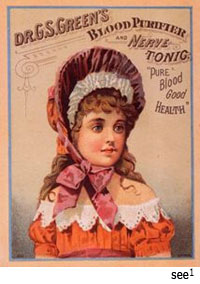
American Plague: yellow fever Anasarca: Generalized massive dropsy. See dropsy. Apoplexy: paralysis due to stroke Aphthae: See thrush. Aphthous stomatitis: See canker. Ascites: See dropsy. Asthenia: See debility. Bad Blood: Syphilis Bilious fever: A term loosely applied to certain intestinal and malarial fevers. See typhus. Biliousness: A complex of symptoms comprising nausea, abdominal discomfort, headache, and constipation–formerly attributed to excessive secretion of bile from the liver. Blood Poisoning: Septicemia Boil: An abscess of skin or painful inflammation of the skin or a hair follicle usually caused by a staphylococcal infection. Synonym: furuncle. Brain fever: See meningitis, typhus. Bright’s Disease: Glomerulonephritis (kidney inflammation) Bronchial asthma: A disorder of breathing, characterized by spasm of the bronchial tubes of the lungs, wheezing, and difficulty in breathing air outward–often accompanied by coughing and a feeling of tightness in the chest. Camp fever: See typhus. Cancer: A malignant and invasive growth or tumor. In the nineteenth century, cancerous tumors tended to ulcerate, grew constantly, and progressed to a fatal end and that there was scarcely a tissue they would not invade. Synonyms: malignant growth, carcinoma. Cancrum otis: A severe, destructive, eroding ulcer of the cheek and lip. In the last century it was seen in delicate, ill-fed, ill-tended children between the ages of two and five. The disease was the result of poor hygiene. It was often fatal. The disease could, in a few days, lead to gangrene of the lips, cheeks, tonsils, palate, tongue, and even half the face; teeth would fall from their sockets. Synonyms: canker, water canker, noma, gangrenous stomatitis, gangrenous ulceration of the mouth. Canker: An ulcerous sore of the mouth and lips, not considered fatal today. Synonym: aphthous stomatitis. See cancrum otis. Catalepsy: seizures/trances Catarrh: Inflammation of a mucous membrane, especially of the air passages of the head and throat, with a free discharge. Bronchial catarrh was bronchitis; suffocative catarrh was croup; urethral catarrh was gleet; vaginal catarrh was leukorrhea; epidemic catarrh was the same as influenza. Synonyms: cold, coryza. Chlorosis: iron deficiency anemia 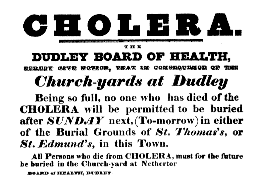
Cholera: An acute, infectious disease characterized by profuse diarrhea, vomiting, and cramps. Cholera is spread by feces-contaminated water and food. Major epidemics struck the United States in the years 1832, 1849, and 1866. . Cholera infantum: A common, noncontagious diarrhea of young children, occurring in summer or autumn. It was common among the poor and in hand-fed babies. Death frequently occurred in three to five days. Synonyms: summer complaint, weaning brash, water gripes, choleric fever of children, cholera morbus. Chorea: Any of several diseases of the nervous system, characterized by jerky movements that appear to be well coordinated but are performed involuntarily, chiefly of the face and extremities. Synonym: Saint Vitus’ dance. 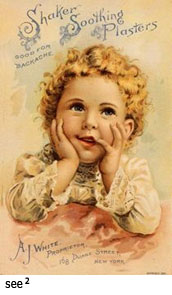
Colic: Paroxysmal pain in the abdomen or bowels. Infantile colic is benign paroxysmal abdominal pain during the first three months of life. Colic rarely caused death. Renal colic can occur from disease in the kidney, gallstone colic from a stone in the bile duct. Congestion: An excessive or abnormal accumulation of blood or other fluid in a body part or blood vessel. In congestive fever the internal organs become gorged with blood. Congestive Fever: malaria Consumption: A wasting away of the body; formerly applied especially to pulmonary tuberculosis. Synonyms: marasmus (in the mid-nineteenth century), phthisis. Convulsions: Severe contortion of the body caused by violent, involuntary muscular contractions of the extremities, trunk, and head. See epilepsy. Coryza: See catarrh. Croup: Any obstructive condition of the larynx (voice box) or trachea (windpipe), characterized by a hoarse, barking cough and difficult breathing occurring chiefly in infants and children. In the early-nineteenth century it was called cynanche trachealis. The crouping noise was similar to the sound emitted by a chicken affected with the pip, which in some parts of Scotland was called roup; hence, probably, the term croup. Synonyms: roup, hives, choak, stuffing, rising of the lights. Debility: Abnormal bodily weakness or feebleness; decay of strength. This was a term descriptive of a patient’s condition and of no help in making a diagnosis. Synonym: asthenia. Diphtheria: An acute infectious disease acquired by contact with an infected person or a carrier of the disease. It was usually confined to the upper respiratory tract (throat) and characterized by the formation of a tough membrane (false membrane) attached firmly to the underlying tissue that would bleed if forcibly removed. In the nineteenth century the disease was occasionally confused with scarlet fever and croup. Dropsy: A contraction for hydropsy. The presence of abnormally large amounts of fluid. Congestive heart failure Dysentery: A term given to a number of disorders marked by inflammation of the intestines (especially of the colon). There are two specific varieties: (1) amebic dysentery (2) bacillary dysentery. Synonyms: flux, bloody flux, contagious pyrexia (fever), frequent griping stools. Eclampsia: A form of toxemia (toxins–or poisons–in the blood) accompanying pregnancy. See dropsy. Effluvia: Exhalations. In the mid-nineteenth century, they were called “vapours” and distinguished into the contagious effluvia, such as rubeolar (measles); marsh effluvia, such as miasmata. Emphysema, pulmonary: A chronic, irreversible disease of the lungs. Enteric fever: See typhoid fever. Epilepsy: A disorder of the nervous system, characterized either by mild, episodic loss of attention or sleepiness (petittnal) or by severe convulsions with loss of consciousness (grand mal). Synonyms: falling sickness, fits. Erysipelas: An disease. Synonyms: Rose, Saint Anthony’s Fire (from its burning heat or, perhaps, because Saint Anthony was supposed to cure it miraculously). 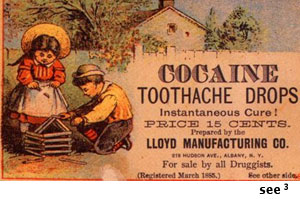
Fatty Liver: Cirrhosis Flux: See dysentery. Furuncle: See boil. Gangrene: Death and decay of tissue in a part of the body–usually a limb–due to injury, disease, or failure of blood supply. Synonym: mortification. Glandular Fever: Mononucleosis Gleet: See catarrh. Gravel: A disease characterized by small stones which are formed in the kidneys, passed along the ureters to the bladder, and expelled with the urine. Synonym: kidney stone. Grippe: an old term for influenza Hectic fever: A daily recurring fever with profound sweating, chills, and flushed appearance– often associated with pulmonary tuberculosis or septic poisoning. Hives: A skin eruption of smooth, slightly elevated areas on the skin which is redder or paler than the surrounding skin. Often attended by severe itching. Also called cynanche trachealis. In the mid-nineteenth century, hives was a commonly given cause of death of children three years and under. Because true hives does not kill, croup was probably the actual cause of death in those children. Hospital fever: See typhus. Hydrocephalus: See dropsy. Hydrothorax: See dropsy. Icterus: See jaundice. Inanition: Exhaustion from lack of nourishment; starvation. Infection: In the early part of the last century, infections were thought to be the propagation of disease by effluvia (see above) from patients crowded together. “Miasms” were believed to be substances which could not be seen in any form–emanations not apparent to the senses. Such miasms were understood to act by infection. Inflammation: Redness, swelling, pain, tenderness, heat, and disturbed function of an area of the body. In the last century, cause of death often was listed as inflammation of a body organ–such as, brain or lung–but this was purely a descriptive term and is not helpful in identifying the actual underlying disease. Jail fever: See typhus. Jaundice: Yellow discoloration of the skin, whites of the eyes, and mucous membranes, due to an increase of bile pigments in the blood. Synonym: icterus. 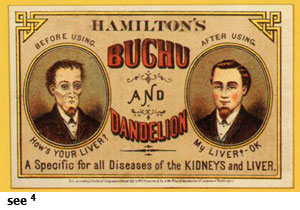
Kidney stone: See gravel. Kings evil: A popular name for scrofula. The name originated in the time of Edward the Confessor, with the belief that the disease could be cured by the touch of the king of England. Lockjaw: Tetanus, a disease in which the jaws become firmly locked together. Synonyms: trismus, tetanus. Lung Fever: pneumonia Lung Sickness: Tuberculosis Malignant fever: See typhus. Marasmus: Malnutrition occurring in infants and young children, caused by an insufficient intake of calories or protein. Meningitis: Inflammation of the meninges characterized by high fever, severe headache, and stiff neck or back muscles. Synonym: brain fever. Milk Sick: poisoning resulting from the drinking of milk produced by a cow who had eaten a plant known as white snake root Mormal: gangrene 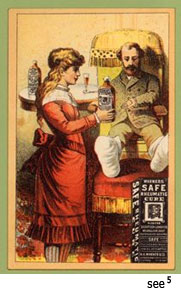
Neuralgia: Sharp and paroxysmal pain along the course of a sensory nerve. Paristhmitis: See quinsy. Petechial fever: See typhus. Phthisis: See consumption. Plague/Black Death: Bubonic Plague Pleurisy: Inflammation of the pleura, the lining of the chest cavity. Symptoms are chills, fever, dry cough, and pain in the affected side (a stitch). Pneumonia: Inflammation of the lungs Podagra: Gout Potts Disease: Tuberculosis of the spinal vertebrae Putrid fever: See typhus. Putrid sore throat: Ulceration of an acute form, attacking the tonsils Pyrexia: See dysentery. Quinsy: An acute inflammation of the tonsils, often leading to an abscess. Synonyms: suppurative tonsillitis, cynanche tonsillaris, paristhmitis, sore throat. Scarlatina: Scarlet fever. A contagious disease. Scrofula: Primary tuberculosis of the lymphatic glands, especially those in the neck. A disease of children and young adults. Synonym: king’s evil. Septic: Infected, a condition of local or generalized invasion of the body by disease-causing germs. Ship fever: See typhus. Softening Of The Brain: cerebral hemorrhage/stroke Spotted fever: See typhus. Summer complaint: See cholera infantum. Suppuration: The production of pus. 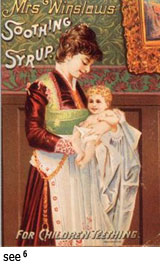
Teething: The entire process which results in the eruption of the teeth. Nineteenth-century medical reports stated that infants were more prone to disease at the time of teething. Symptoms were restlessness, fretfulness, convulsions, diarrhea, and painful and swollen gums. The latter could be relieved by lancing over the protruding tooth. Often teething was reported as a cause of death in infants. Perhaps they became susceptible to infections, especially if lancing was performed without antisepsis. Another explanation of teething as a cause of death is that infants were often weaned at the time of teething; perhaps they then died from drinking contaminated milk, leading to an infection, or from malnutrition if watered-down milk was given. Tetanus: An infectious, often-fatal disease caused by a specific bacterium that enters the body through wounds. Synonyms: trismus, lockjaw. Thrush: A disease characterized by whitish spots and ulcers on the membranes of the mouth, tongue, and fauces (the passage between the back of the mouth and the pharynx) caused by a parasitic fungus. Synonyms: aphthae, sore mouth, aphthous stomatitis. Trismus nascentium or neonatorum: A form of tetanus seen only in infants, almost invariably in the first five days of life. Typhoid fever: An infectious, often-fatal disease, usually occurring in the summer months–characterized by intestinal inflammation and ulceration. The name came from the disease’s similarity to typhus (see below). Synonym: enteric fever. Typhus: An acute, infectious disease transmitted by lice and fleas. The epidemic or classic form is louse borne; the endemic or murine is flea borne. Synonyms: typhus fever, malignant fever (in the 1850s), jail fever, hospital fever, ship fever, putrid fever, brain fever, bilious fever, spotted fever, petechial fever, camp fever. Variola: smallpox Winter Fever: pneumonia Yellow fever: An acute, often-fatal, infectious disease of warm climates–caused by a virus transmitted by mosquitoes Return to Top 1Blood Purifiers and Nerve Tonics left few claims out if the list of ailments they could cure. Dr. Green’s for example for example, listed scrofula, Rheumatism, Neuralgia, Kidney Complaint, Liver Complaint, Lung Trouble, Salt Rheum, Constipation, Piles, Jaundice, Loss of Appetite, Female Weakness, Dyspepsia and Nervousness. And testimonials from happy users added yet more. 2Herbs, roots, barks and other natural products were sold by the Shakers to support their communities. Capitalizing on their reputation, the A. J. White Company launched several products using their name, the Shaker Soothing Plasters being a representative example. Plasters today are infrequently used, but still are an effective means of providing counter irritation. 3While cocaine has some positive medical indication, it is doubtful that its use in toothache drops is one of them. Lloyd’s Toothache Drops were registered in 1885 and must have been a quick success, for shortly thereafter the firm stated that the product’s “wonderful properties are fully demonstrated by the many recommendations it is daily receiving.” 4Before and after pictures are natural illustration for proprietary medicines, and this 1872 card for Hamilton’s Buchu and Dandelion is a classic example. The ingredients, buchu and dandelion, have excellent diuretic properties, giving patients evidence of some activity, but this does not necessarily mean that they are good for “all diseases of the kidney and liver.” 5 H. H. Warner made his first fortune as a pioneer in the manufacture of safes in Rochester, New York. His company later became part of the Mosler Safe Company, and because of his background, Warner felt it appropriate to use the name “safe” in several of his products, including the Rheumatic Cure. Undoubtedly this word in the title aided sales. 6The reason Mrs. Winslow’s Soothing Syrup was effective in calming teething children was that it contained morphine, prompting some physicians and journalists to call it a “babykiller.” In the nineteenth-century, the British public was better protected that the American, since their labels for this product had to be marked “Poison.” Return to Top |